Explore the Medinas of Morocco
The medinas of Morocco are the historic centers of each main city of Morocco with narrow streets that open up to large public squares, unique food and craft markets and beautiful ancient architecture and buildings that have historic value, repurposed into unique hotels and tourist attractions and other public venues like museums, galleries and restaurants.
The medinas are chaotic and colorful, each medina is unique and a jumble of narrow streets, busy spice, food and craft markets or souks and unique architecture. You’ll come across Arabic schools or Madrasa, ancient gates, mosques and towers, Hammams and delicious street food, bakeries and restaurants.
You definitely will enjoy exploring each medina that we describe below.
Medinas of Morocco – explore the old town medinas with this easy and comprehensive guide to the city and area
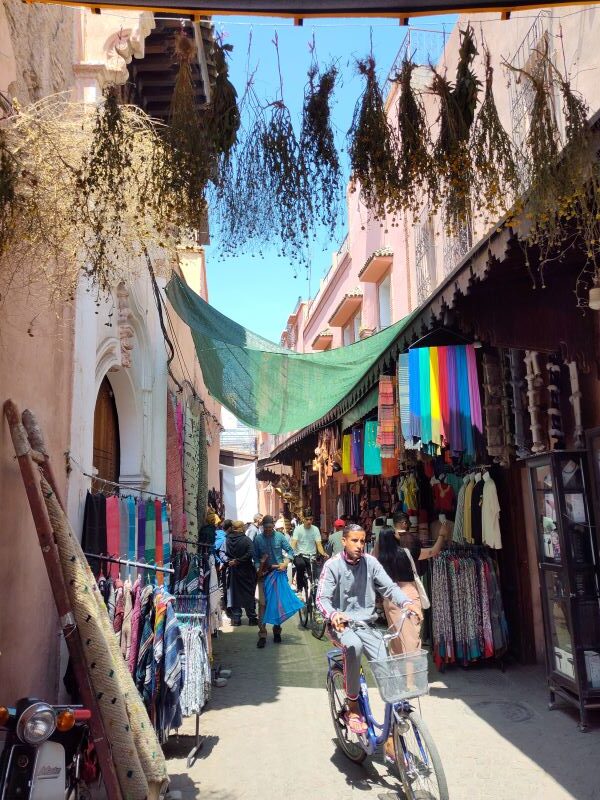
What is a Medina?
A medina is the historic old quarter of a North African city, typically enclosed by ancient walls and filled with a maze of narrow alleys, markets, and traditional homes. It’s the cultural and social heart of the city, where daily life unfolds in bustling souks selling spices, textiles, ceramics, and local crafts. Within its winding lanes, you’ll often find mosques, hammams, riads, and small squares that serve as gathering places. Many medinas, such as those in Fez or Marrakech, date back centuries and reflect layers of Islamic, Berber, and Andalusian influence. Visiting one offers a glimpse into the living history of urban life before the modern era reshaped the cities around them.
What are the important attractions and sites worth visiting in a Medina
A medina is full of fascinating places to explore, often blending history, religion, craftsmanship, and daily life. Key attractions usually include the main souk or market area, where locals sell spices, carpets, leather goods, and handmade crafts. Historic mosques and madrasas (Islamic schools) often stand as architectural highlights, showcasing intricate tile work and wood carvings. Old city gates and walls give a sense of the medina’s fortified past, while traditional riads—courtyard homes converted into guesthouses—offer a quiet escape from the busy streets. Public squares serve as social hubs with street performers, food stalls, and cafés. You’ll also find hammams (public baths), caravanserais or fondouks (historic inns for traders), and small museums preserving local art and history. Each medina has its own character, but together these sites reveal the layered heritage and daily rhythms that define life in these ancient quarters.
We describe the best Medinas to the main cities of Morocco to explore below
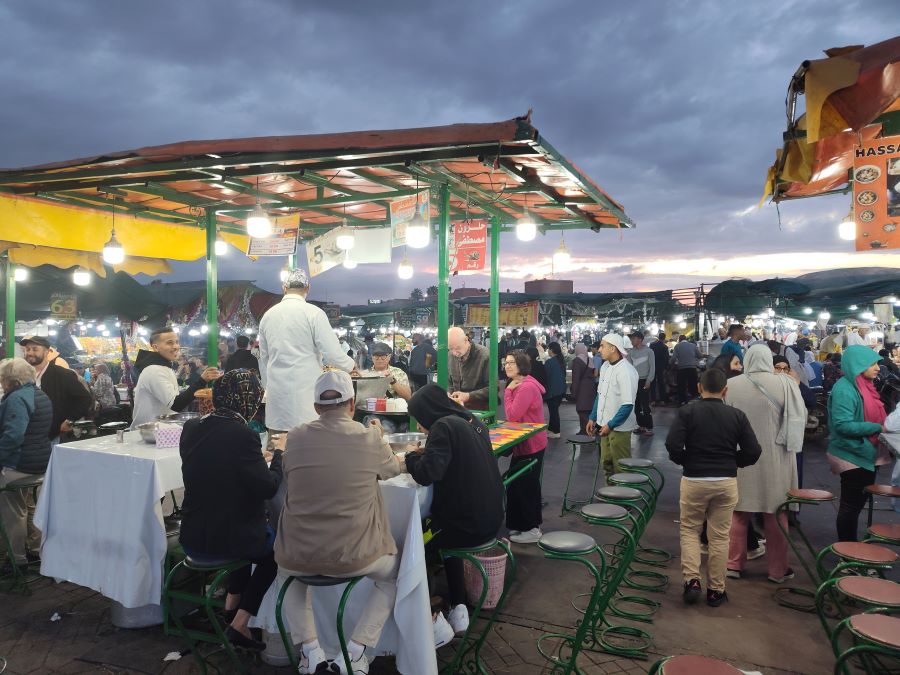
Marrakesh Medina
One of the most popular and historic sites of Marrakesh, the Medina is ancient and filled with many historic sites, markets, schools, museums and repurposed architecture into beautiful Riads (Inns), restaurants and other important public buildings below:
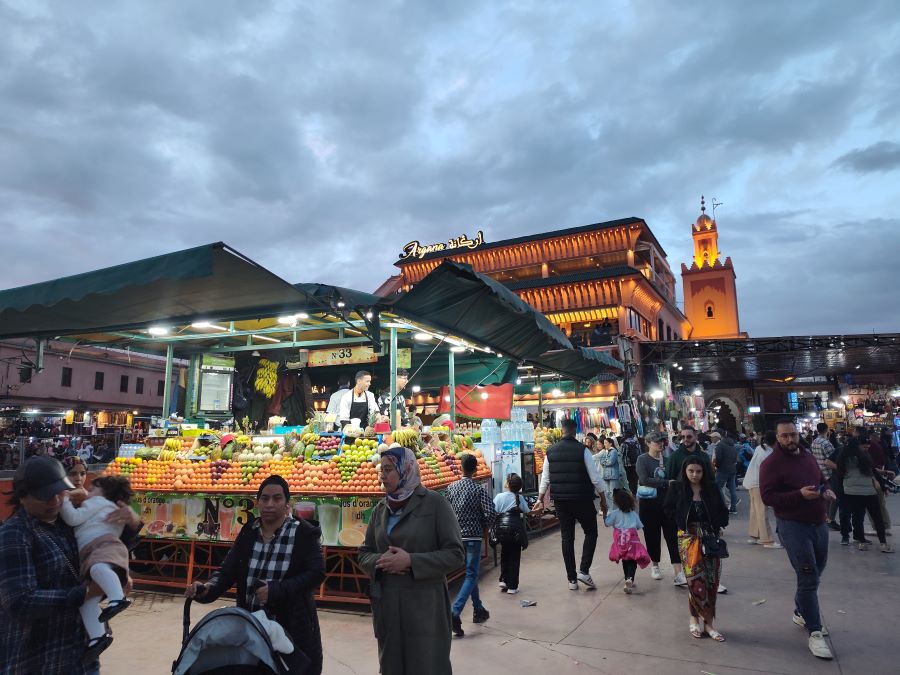
- The main hub of the medina and a UNESCO World Heritage site.
- Famous for its street performers, snake charmers, food stalls, and night market atmosphere.
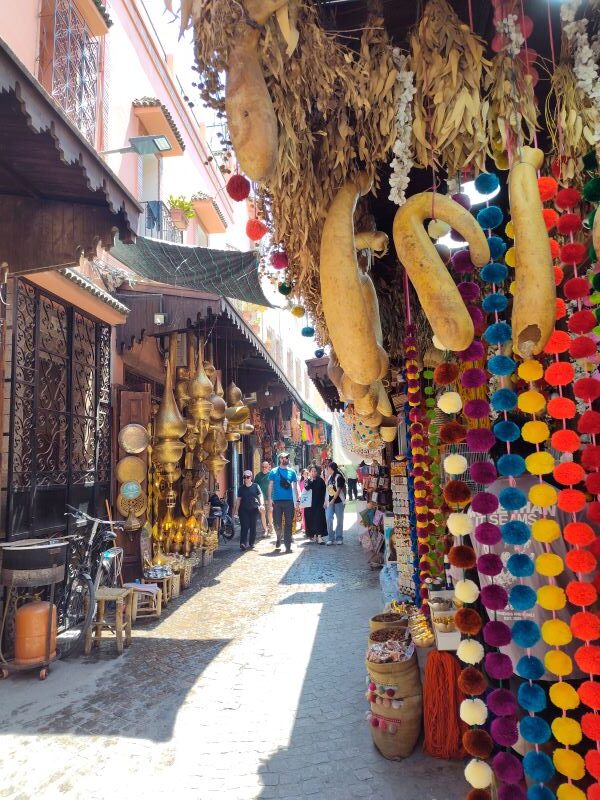
2. Souks of Marrakesh
- A maze of traditional markets selling spices, textiles, jewelry, carpets, and leather goods.
- Key sections include the Souk Semmarine (clothing and leather), Souk el Attarine (spices and perfumes), and Souk Chouari (woodwork).
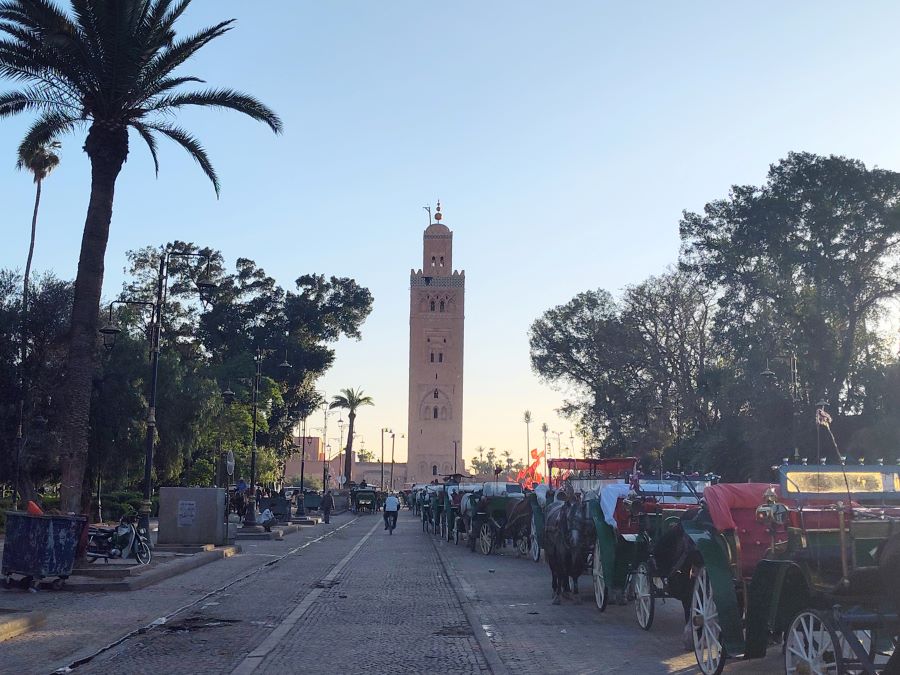
- The largest mosque in Marrakesh, known for its 12th-century minaret visible across the city.
- Non-Muslims cannot enter, but the exterior and surrounding gardens are worth visiting.
4. Bahia Palace
- A 19th-century palace known for its ornate courtyards, mosaic tiles, and peaceful gardens.
- Offers insight into Moroccan craftsmanship and royal architecture.
5. Saadian Tombs
- Resting place of the Saadian dynasty rulers, rediscovered in 1917.
- Features detailed stucco and marble work surrounded by lush gardens.
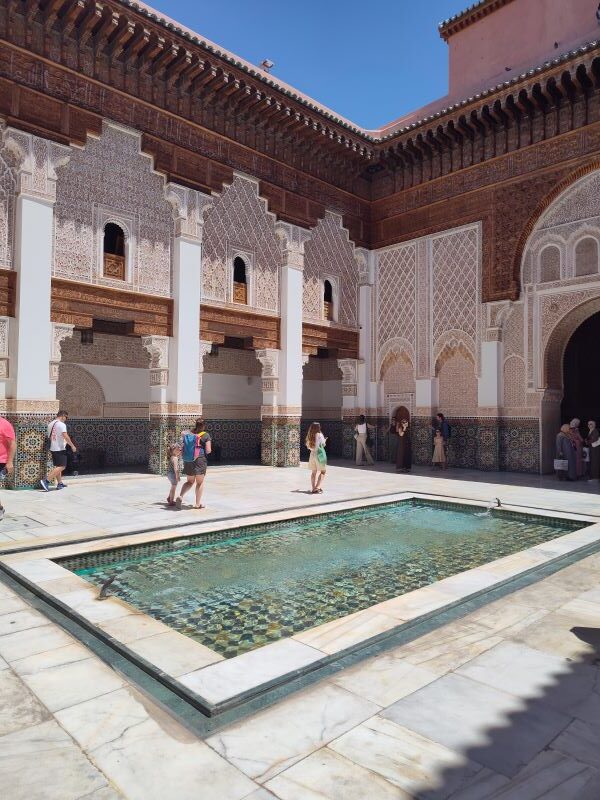
- Once an Islamic college, now a museum highlighting Islamic art and design.
- Admired for its carved cedar wood, marble courtyard, and geometric tile patterns.
7. Marrakesh Museum
- Located in a restored palace near Ben Youssef Madrasa.
- Exhibits Moroccan art, historical artifacts, and architectural details.
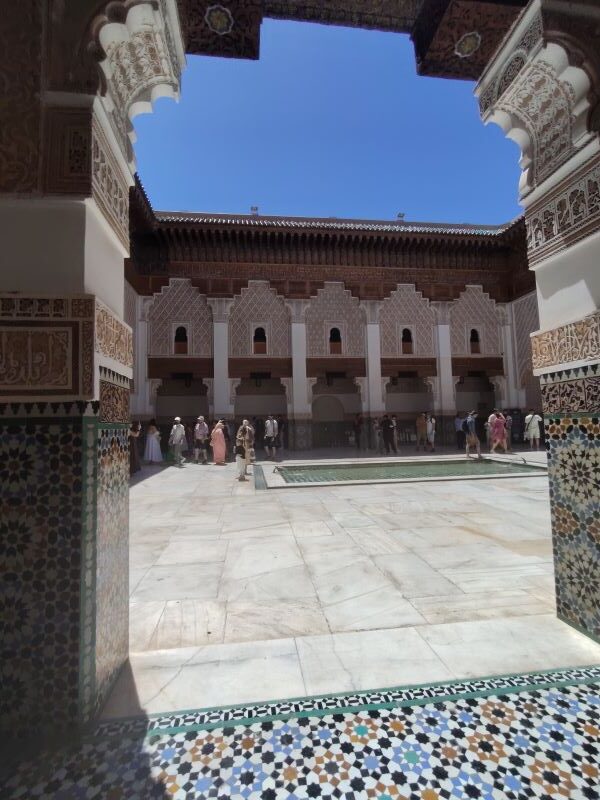
8. Dar Si Said Museum
- Dedicated to Moroccan arts and crafts, especially woodwork and Berber artifacts.
- Housed in a beautifully decorated former palace.
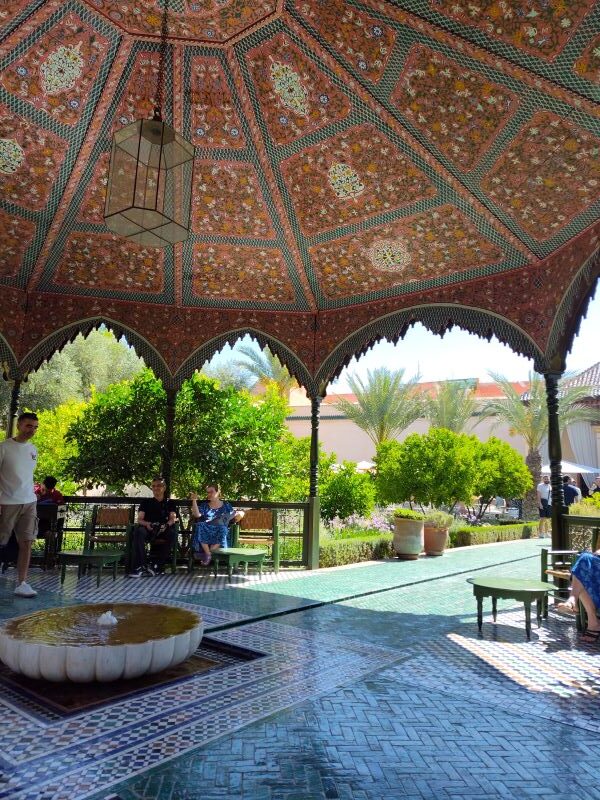
9. Le Jardin Secret
- A restored traditional Islamic garden within the medina walls.
- Offers a calm space with fountains, exotic plants, and city views from its tower.
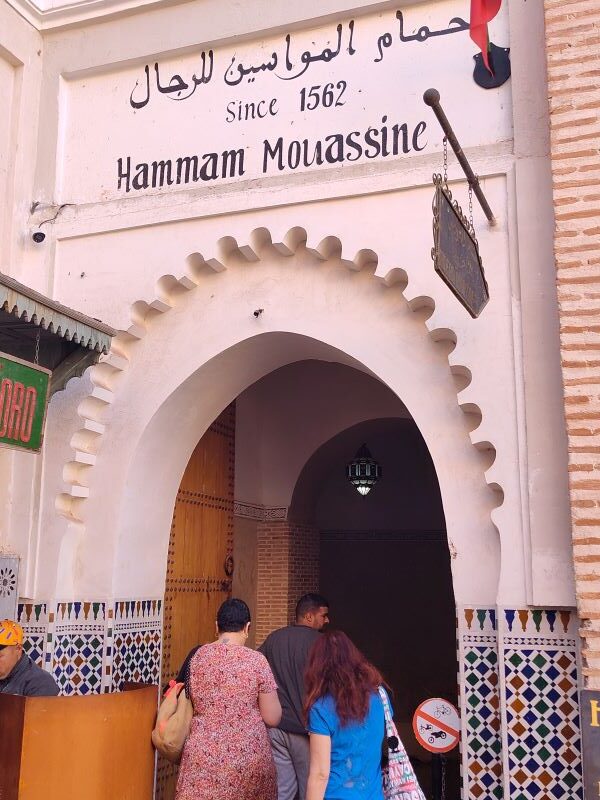
10. Traditional Hammams and Riads
- Experience a local hammam (bathhouse) or stay in a riad (traditional courtyard home).
- Many riads also host rooftop cafés and small restaurants overlooking the medina.
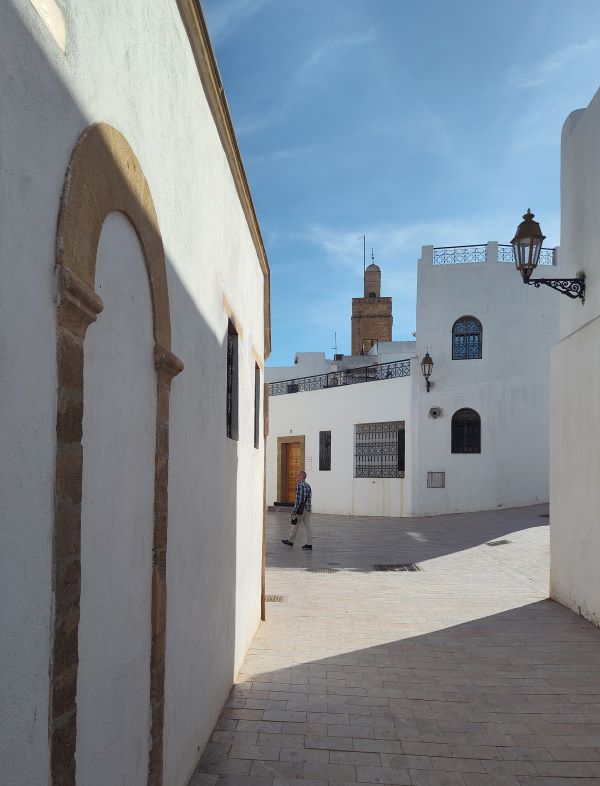
Rabat Medina
The Rabat Medina showcases both the historic and important along with daily markets, specialty souks and important areas to explore below
1. The Medina Itself
- A calmer and more orderly medina compared to others in Morocco.
- Known for its blue-and-white painted walls, Andalusian-style architecture, and easy-to-navigate streets.
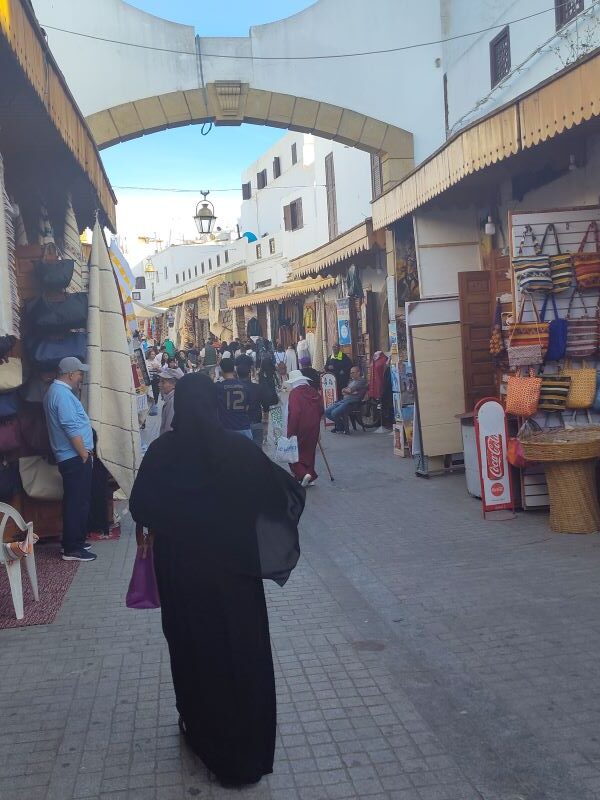
2. Rue des Consuls
- The main shopping street of the medina.
- Lined with artisan shops selling carpets, leather goods, jewelry, and traditional Moroccan crafts.
- Named after the European consuls who once lived there during the 17th century.
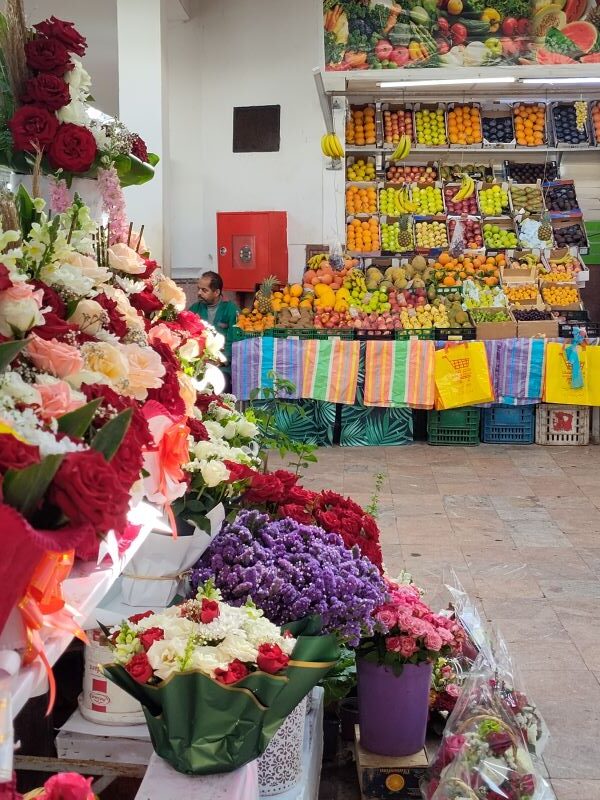
3. Souks of Rabat
- Smaller and less hectic than those in Marrakesh or Fez, offering a more local experience.
- Souk Sebbat for slippers and textiles, Souk es-Sabbat for jewelry, and food markets selling olives, spices, and sweets.
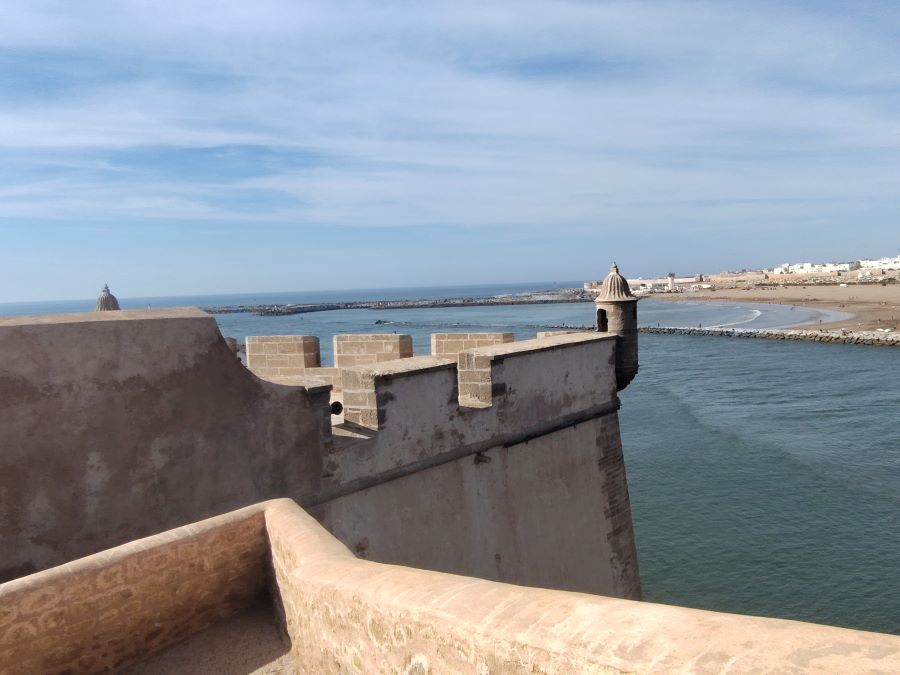
4. Kasbah des Oudayas
- A fortified area overlooking the Bou Regreg River at the edge of the medina.
- Features narrow blue-and-white streets, traditional homes, and views of the Atlantic Ocean.
- Includes the Oudayas Museum and Andalusian Gardens for a peaceful visit.
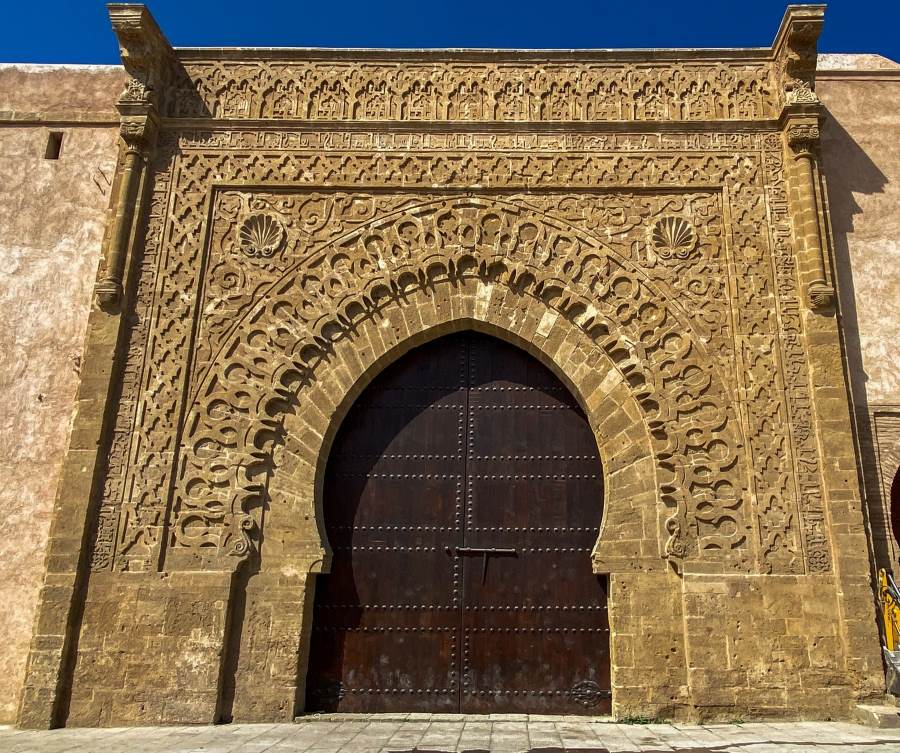
5. The Oudayas Gate (Bab Oudaïa)
- An impressive 12th-century gateway built during the Almohad dynasty.
- Known for its carved stone archway and historic significance as one of Rabat’s oldest structures.
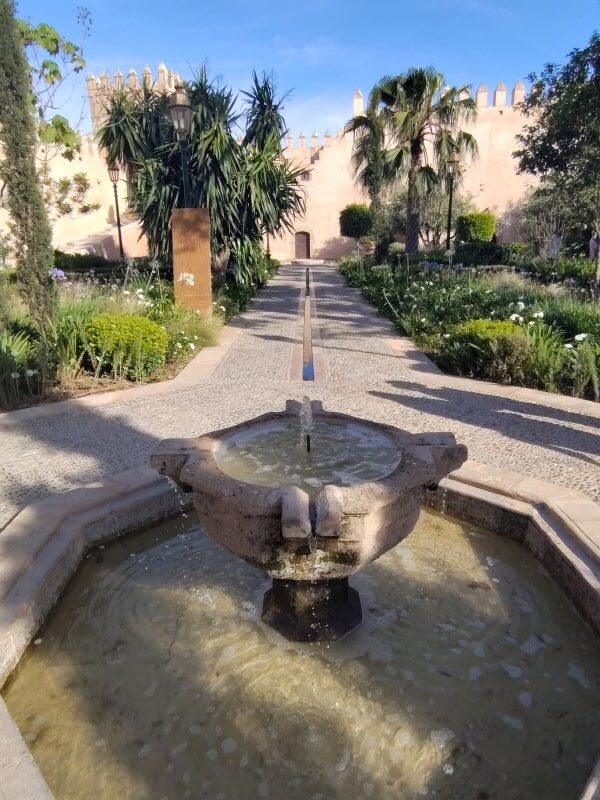
6. Andalusian Gardens
- Located within the Kasbah des Oudayas.
- A serene green space with orange trees, fountains, and shaded walkways.
7. Café Maure
- A traditional Moroccan café overlooking the river within the Kasbah.
- Ideal for mint tea and pastries while enjoying scenic views.
8. Old Mosques and Shrines
- The medina contains several small mosques and zaouias (religious shrines), some dating back centuries.
- While not all are open to non-Muslims, they add to the medina’s historic character.
9. Dar al-Makhzen Area (nearby)
- Close to the medina, the Royal Palace area can be admired from the outside for its grand walls and gates.
10. Local Life and Food
- Street vendors, small bakeries, and family-run restaurants offer authentic local meals.
- Try fresh seafood, tagines, and Moroccan sweets in the medina’s quieter food stalls.
Further reading – A visit to Rabat, things to do
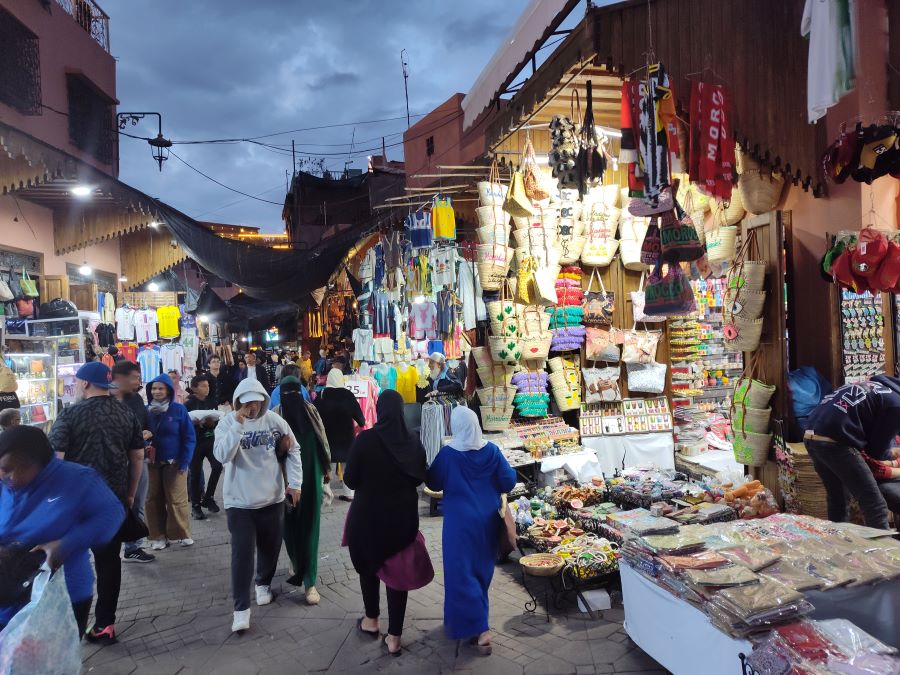
Essaouira Medina
The Essaouira Medina is filled with the everyday markets, historic sites, ramparts and viewpoints along with the harbor and other fortifications to explore on your own or on a walking tour. Here are the main places to visit below:
1. The Medina of Essaouira (UNESCO World Heritage Site)
- A beautifully preserved coastal medina with whitewashed buildings, blue doors, and sea breezes.
- Built in the 18th century as a fortified port town blending European and Moroccan design.
- Known for its laid-back atmosphere, artisan workshops, and oceanfront ramparts.
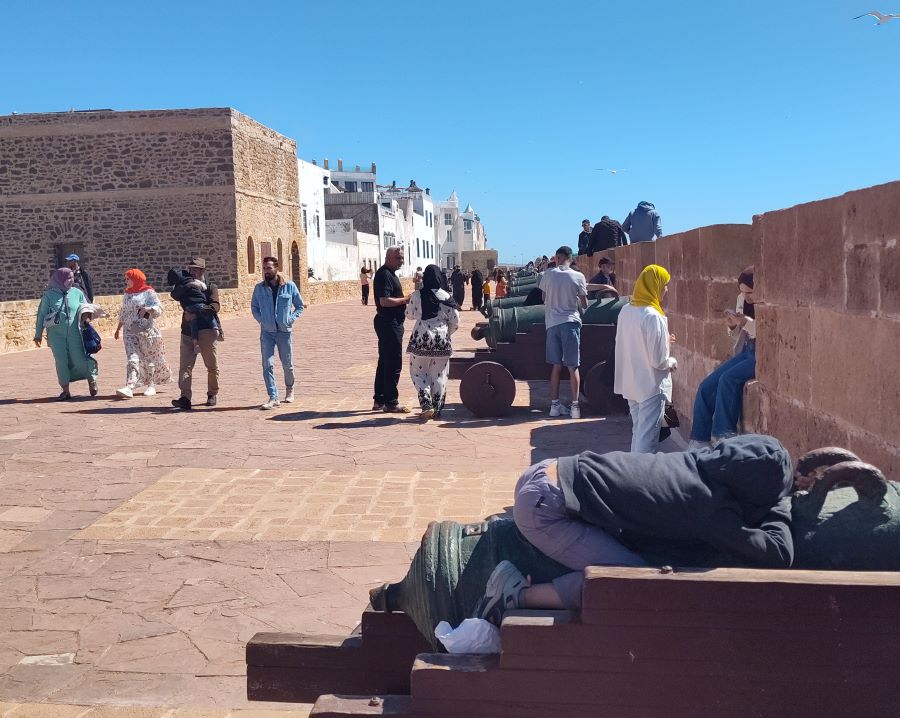
2. Skala de la Ville
- Historic sea bastion with old cannons facing the Atlantic.
- Offers panoramic views of the ocean and the city walls.
- Famous for its appearance in films and for local woodcarvers working nearby.
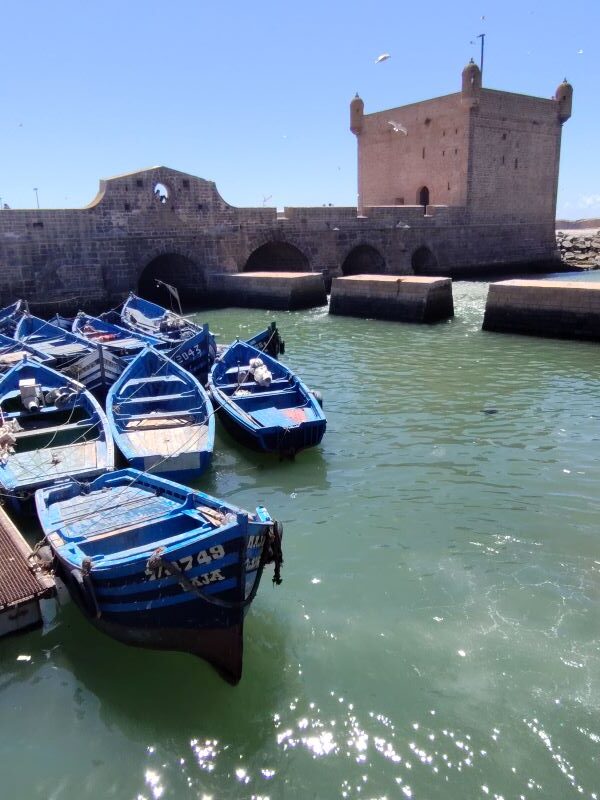
3. Skala du Port
- The old port fortifications next to the fishing harbor.
- Great for watching the fishermen at work and the seagulls circling over the boats.
- Provides one of the best viewpoints for photographing the medina and coastline.
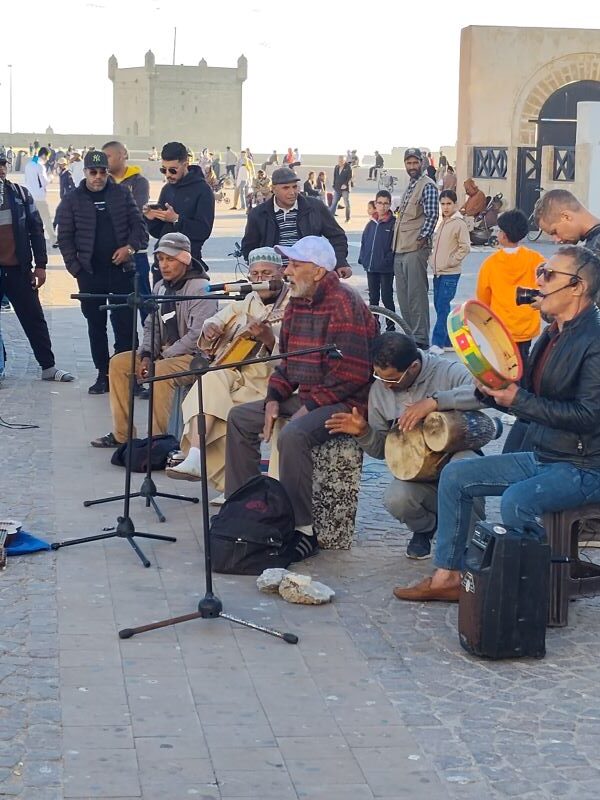
4. Moulay Hassan Square
- The main plaza at the entrance to the medina.
- A lively area filled with cafés, restaurants, and street performers.
- A good starting point for exploring the old city.
5. The Port of Essaouira
- A working fishing port where blue boats line the docks.
- Visitors can watch the daily fish auctions and try fresh grilled seafood at nearby stalls.
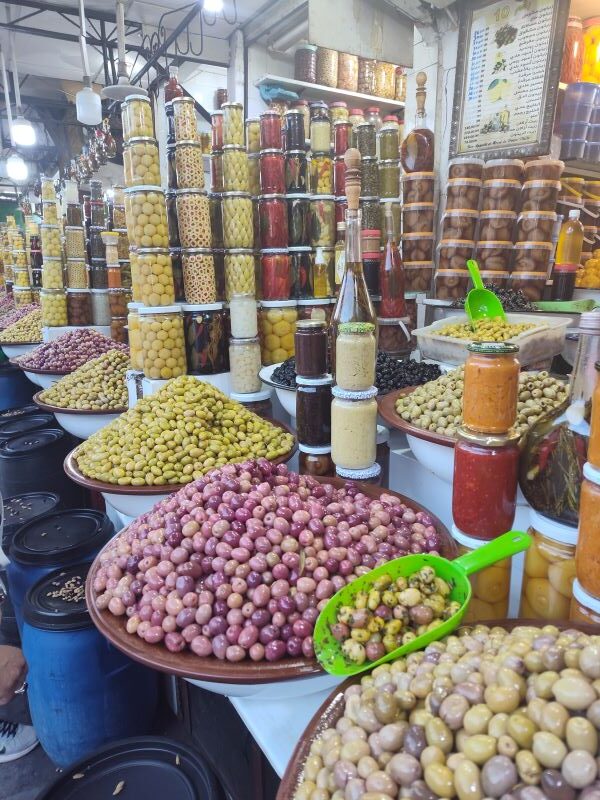
6. The Souks of Essaouira
- Divided into small sections for spices, crafts, and local produce.
- Known for woodwork made from thuya wood, handmade jewelry, and woven textiles.
- Less crowded than other Moroccan souks, making browsing more relaxed.
7. Sidi Mohamed Ben Abdallah Museum
- Housed in a restored 19th-century mansion.
- Exhibits local history, Berber artifacts, music instruments, and traditional crafts.
8. Jewish Quarter (Mellah)
- Historic neighborhood reflecting the city’s Jewish heritage.
- Features restored synagogues and traditional homes, offering insight into Essaouira’s multicultural past.
9. Art Galleries and Workshops
- Essaouira is known for its art scene, with galleries showcasing contemporary Moroccan and local artists.
- Visit Galerie d’Art Damgaard or smaller studios around Rue de l’Horloge.
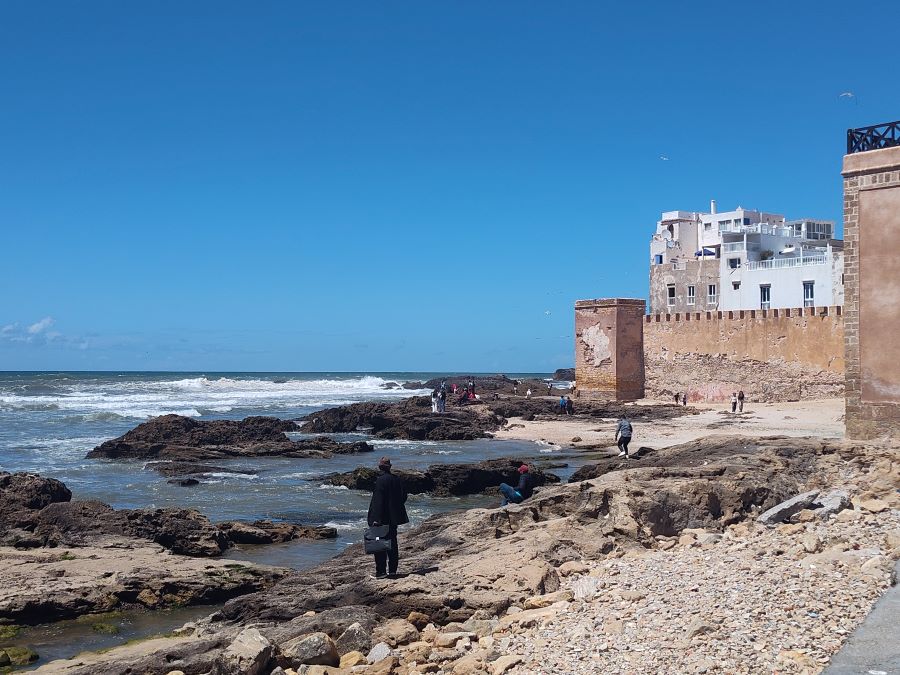
10. City Ramparts and Gates
- Walk along the fortified walls for ocean views and access to several historic gates like Bab Marrakech and Bab Doukkala.
- Each offers a glimpse of Essaouira’s military architecture and coastal defense history.
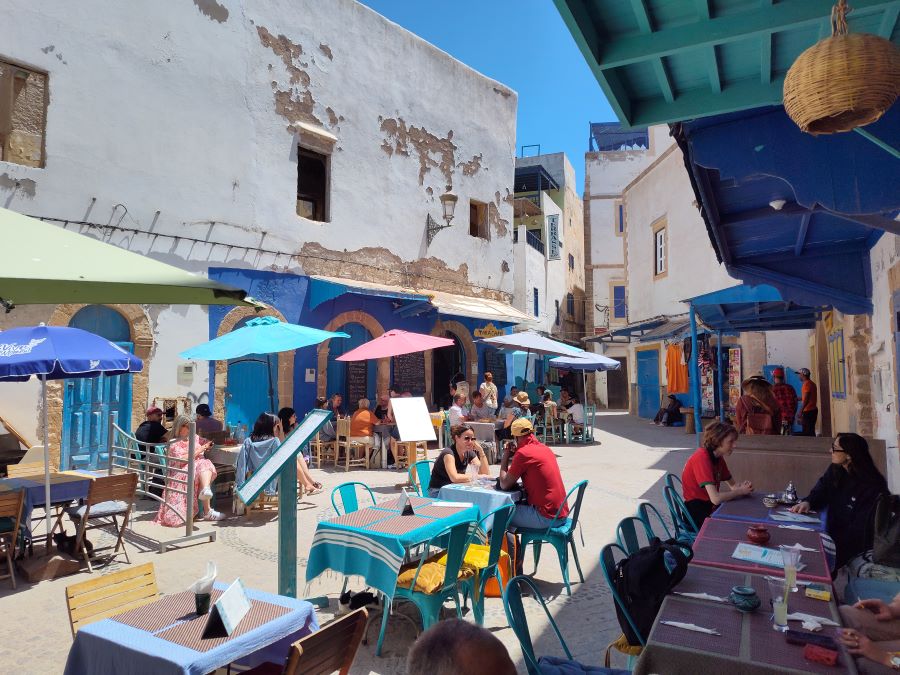
11. Local Food and Cafés
- Enjoy seafood tagines, grilled sardines, or pastries in casual seaside restaurants.
- Rooftop cafés around the medina offer scenic views and a relaxing spot to unwind after exploring.
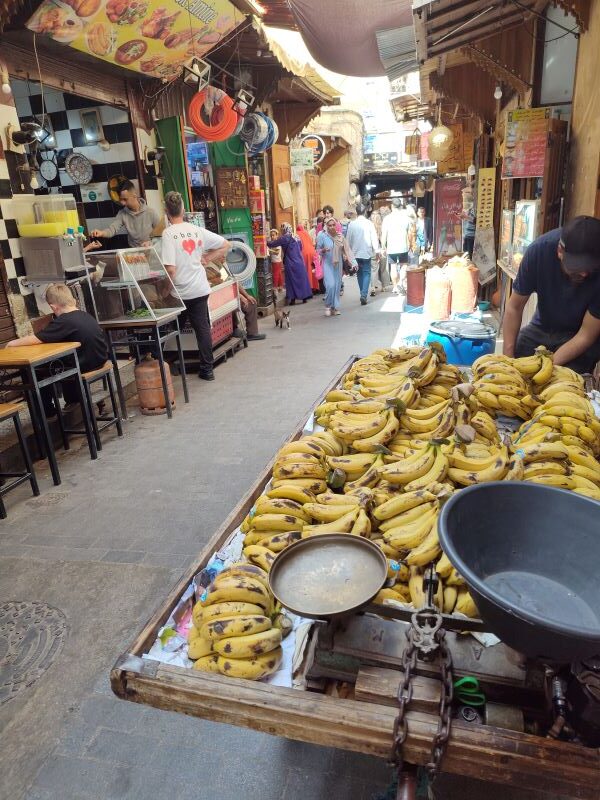
Fez Medina
The Fez Medina is so well lived in and historic, filled with important landmarks, museums and monuments along with the everyday markets, souks and important attractions to visit below.
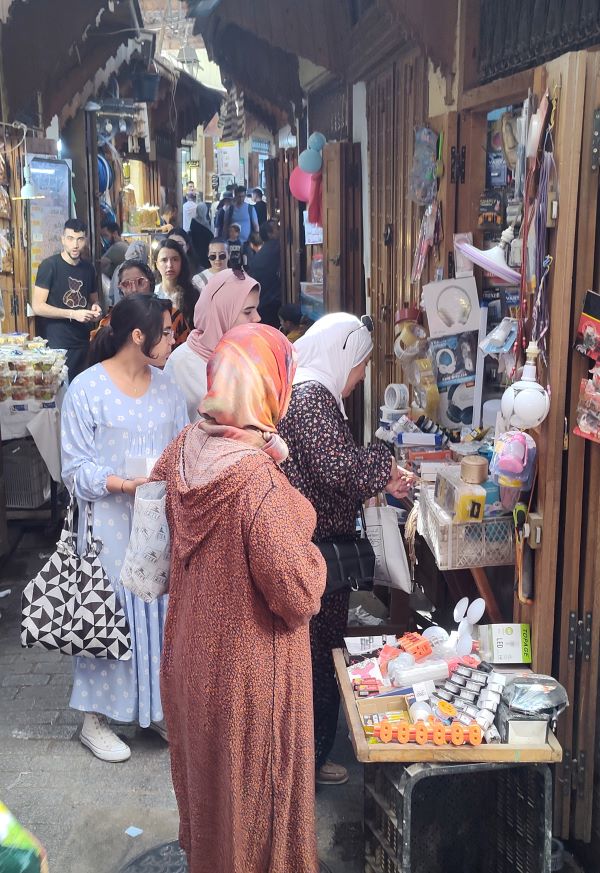
1. Fez el-Bali (Old Medina)
- The oldest part of Fez, founded in the 9th century and a UNESCO World Heritage Site.
- A maze of over 9,000 narrow alleys lined with souks, mosques, madrasas, and artisan workshops.
- One of the best-preserved medieval cities in the Islamic world.
2. Bab Boujloud (The Blue Gate)
- The main entrance to the Fez Medina.
- Notable for its blue-and-green tilework symbolizing Fez’s Islamic and cultural identity.
- A popular meeting point and landmark for orientation.
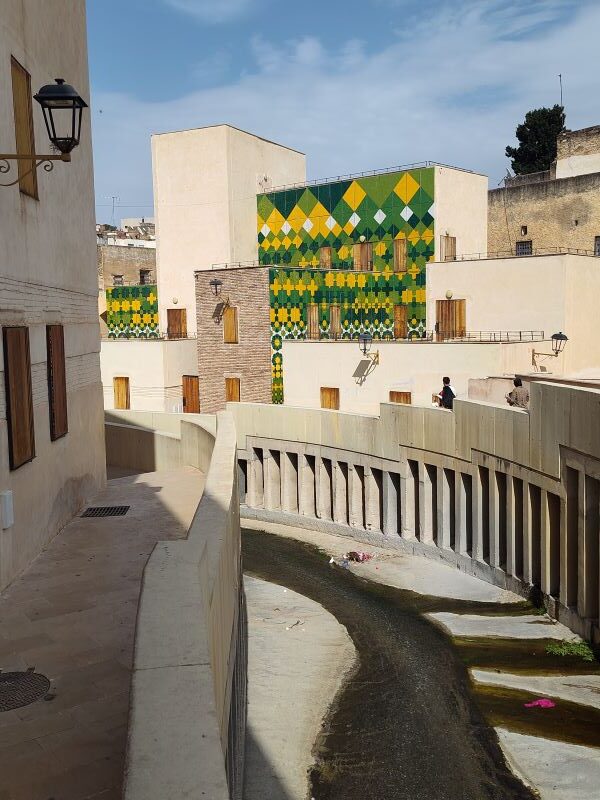
3. Al Quaraouyine Mosque and University
- Founded in 859 and recognized as one of the oldest operating universities in the world.
- Features traditional Islamic architecture and a vast library.
- Non-Muslims cannot enter, but the courtyard and façade can be admired from nearby rooftops.
- A 14th-century Islamic college built by the Marinid dynasty.
- Open to non-Muslim visitors and admired for its zellij tilework, carved cedar wood, and marble details.
- Another masterpiece of Marinid architecture near the spice market.
- Smaller but beautifully decorated with intricate stucco, wood, and mosaic patterns.
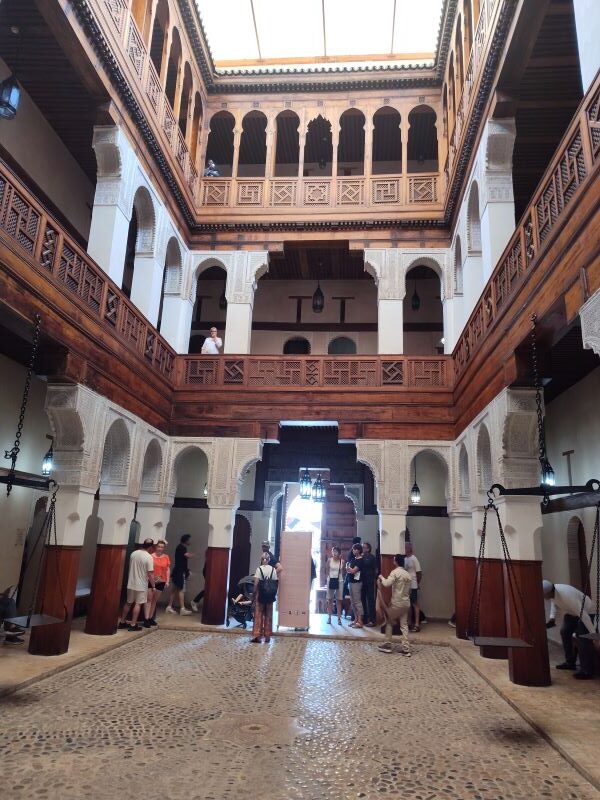
6. Nejjarine Museum of Wooden Arts and Crafts
- Located in a restored fondouk (caravanserai).
- Exhibits traditional wooden craftsmanship and tools from across Morocco.
- Features a rooftop terrace with panoramic views of the medina.
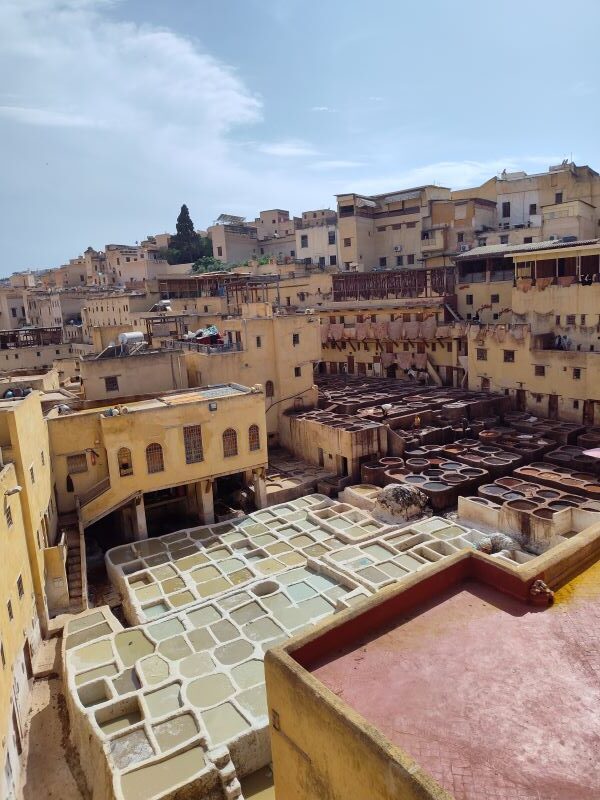
7. Chouara Tannery
- One of the oldest tanneries in the world, dating back to the 11th century.
- Visitors can watch leather being dyed in traditional stone vats from viewing terraces above.
- Surrounding shops sell high-quality leather goods.
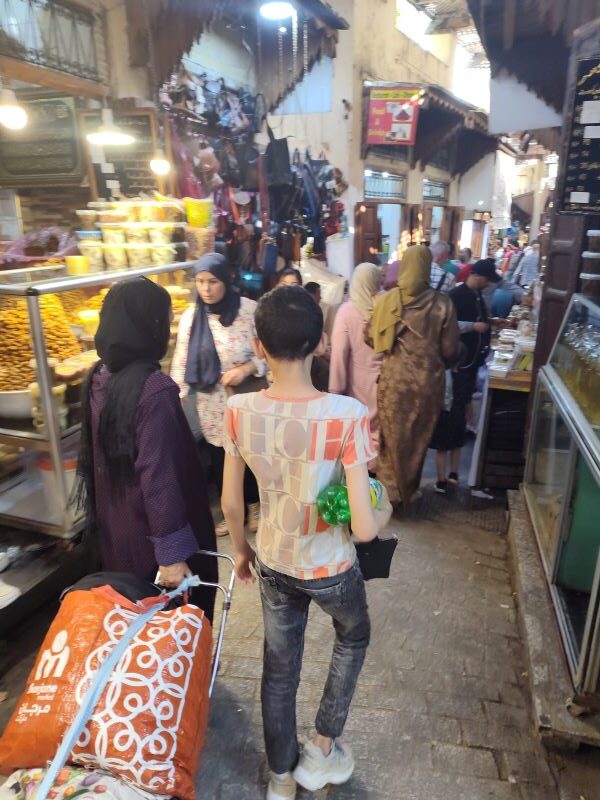
8. Souks of Fez
- Divided into specialized areas for spices, metalwork, ceramics, fabrics, and leather.
- Souk el Henna for natural cosmetics and dyes, and Souk Attarine for perfumes and spices.
9. The Mellah (Jewish Quarter)
- Located near the Royal Palace, featuring distinct architecture with wooden balconies.
- Includes the Aben Danan Synagogue and a historic Jewish cemetery.
10. Royal Palace (Dar el Makhzen)
- Not open to the public but admired for its grand bronze doors and colorful tilework.
- A popular spot for photography at the palace gates.
11. Seffarine Square
- A lively square filled with coppersmiths hammering metal by hand.
- A great place to witness traditional craftsmanship in action.
12. Jnan Sbil Gardens
- A peaceful 18th-century garden just outside the medina walls.
- Offers a quiet escape with fountains, shaded paths, and native plants.
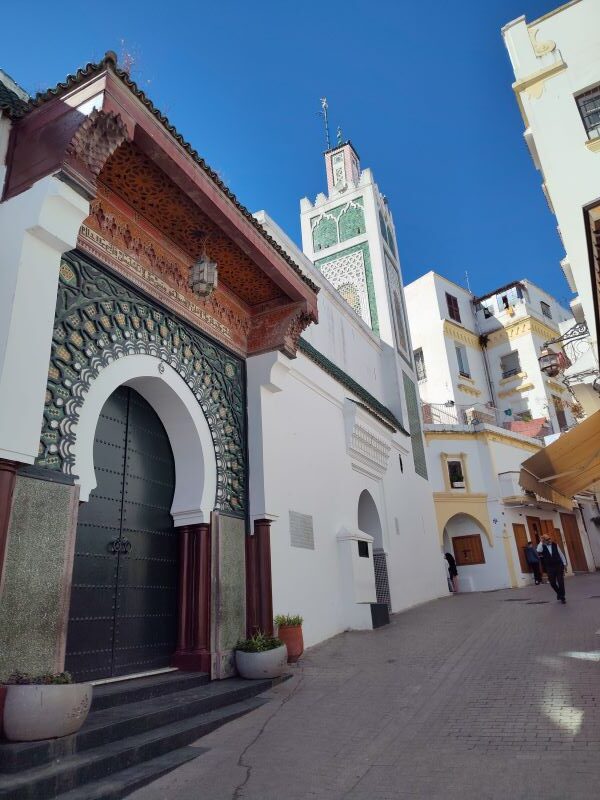
Tangier Medina
Visit Tangier Medina and the important museums, Kasbah, mosques and religious sites and ramparts with gorgeous viewpoints of the Mediterranean below
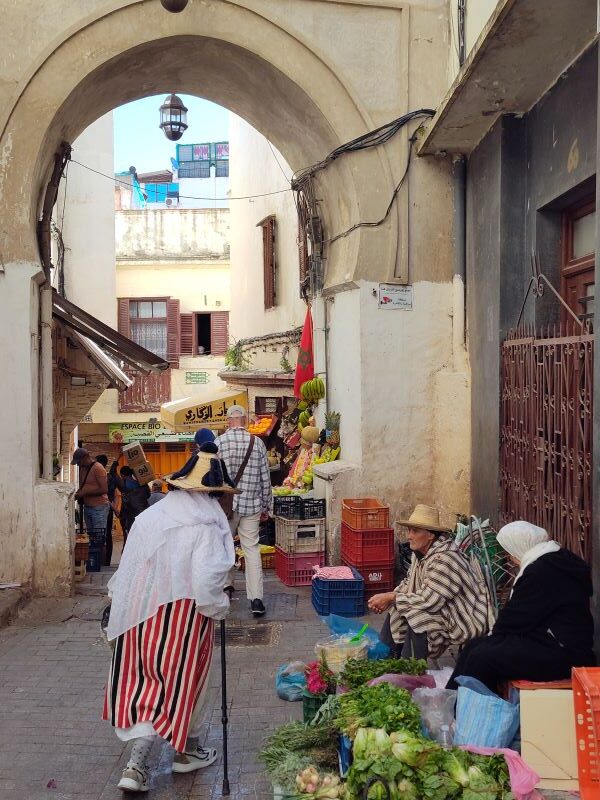
1. The Medina of Tangier
- The old walled city overlooking the Strait of Gibraltar.
- A blend of Moroccan, Andalusian, and European influences reflecting Tangier’s cosmopolitan history.
- Filled with narrow alleys, whitewashed buildings, and small squares leading toward the sea.
2. Bab el Fahs and Grand Socco (Place du Grand Socco)
- The main entrance to the medina and a lively gathering spot.
- Surrounded by cafés, shops, and the historic Cinema Rif.
- A good starting point to explore the medina’s upper section.
3. Petit Socco (Small Square)
- Once a famous meeting place for writers, artists, and traders.
- Lined with old cafés such as Café Tingis and Café Central, perfect for people-watching.
- Still carries the charm of Tangier’s bohemian past.
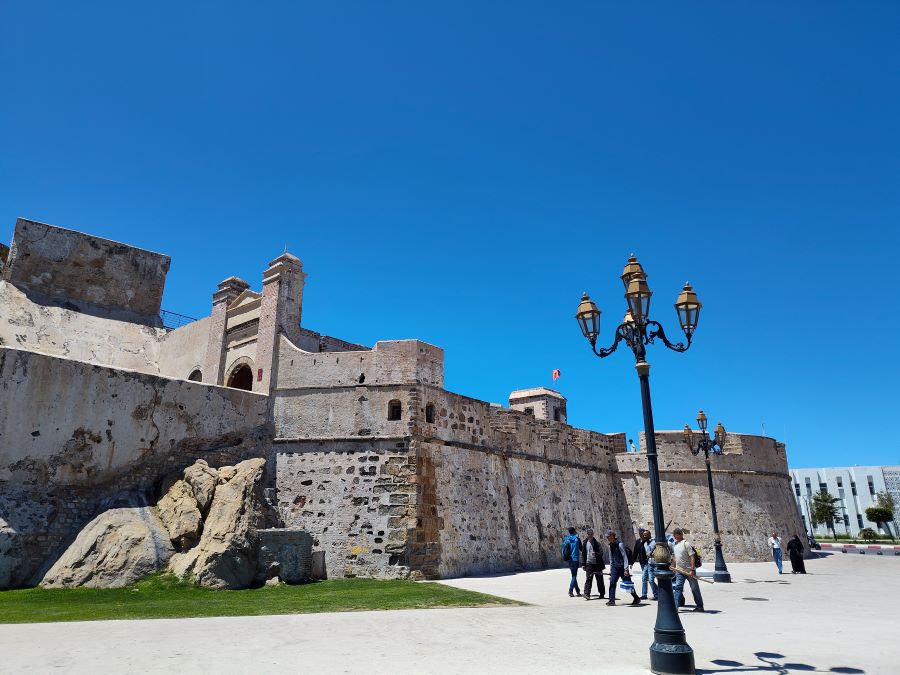
- Located at the highest point of the medina, offering views of the port and bay.
- A peaceful area filled with old palaces, narrow lanes, and small museums.
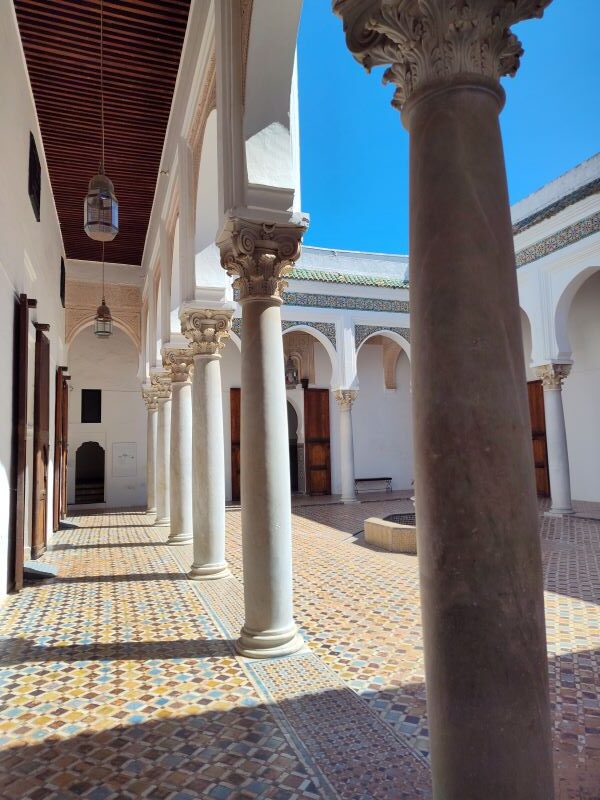
5. Kasbah Museum (Dar el Makhzen)
- Former sultan’s palace built in the 17th century.
- Now a museum showcasing Moroccan art, artifacts, and historical exhibits from prehistory to the 19th century.
- The interior courtyards and gardens reflect classic Moroccan architecture.
6. Kasbah Square (Place de la Kasbah)
- A scenic plaza surrounded by historic buildings and cafés.
- Offers panoramic views over the ocean and the Spanish coast on clear days.
7. The American Legation Museum
- The first American public property abroad, gifted by the Sultan of Morocco in 1821.
- Exhibits U.S.–Morocco relations, art, and period furnishings.
- Located within the medina near Rue d’Amerique.
8. Mendoubia Gardens
- A quiet green space near the Grand Socco with old banyan trees and shaded walkways.
- Features a collection of ancient steles and sculptures from Roman sites in Morocco.
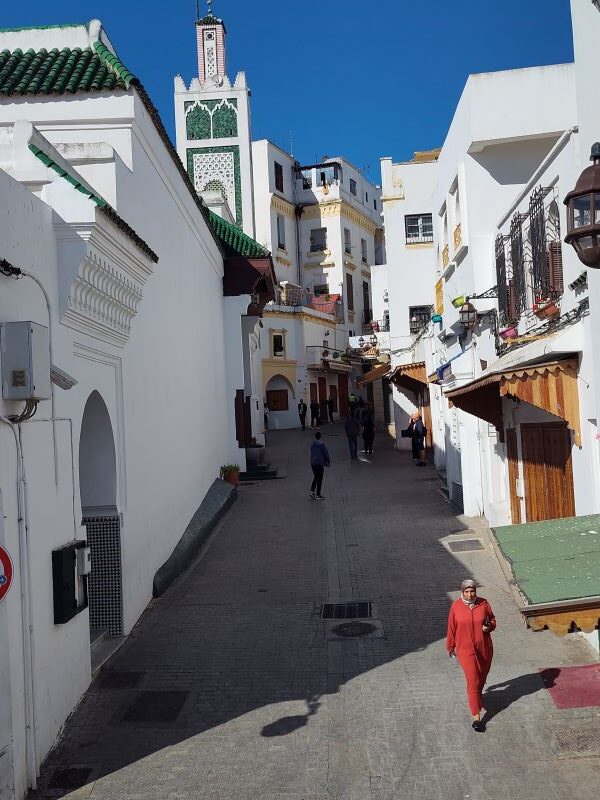
9. The Souks of Tangier
- Compact and colorful markets selling spices, rugs, textiles, leather goods, and ceramics.
- More relaxed than other Moroccan souks, allowing for easy browsing.
10. Mosques and Religious Sites
- The Great Mosque of Tangier, originally a Portuguese church, now serves as a main religious site.
- Non-Muslims cannot enter but can admire its architecture and minaret from the outside.
11. Tangier’s Artisan Workshops
- The medina hosts cooperatives where artisans craft metal lamps, textiles, and wood carvings.
- Visitors can watch traditional techniques passed down for generations.
12. Views of the Port and the Strait
- Several terraces along the medina walls and kasbah offer striking sea views.
- Best enjoyed during sunset when the light hits the whitewashed rooftops and ocean below.
Read more – Top Things to do in Tangier
A visit to Tangier Kasbah Museum
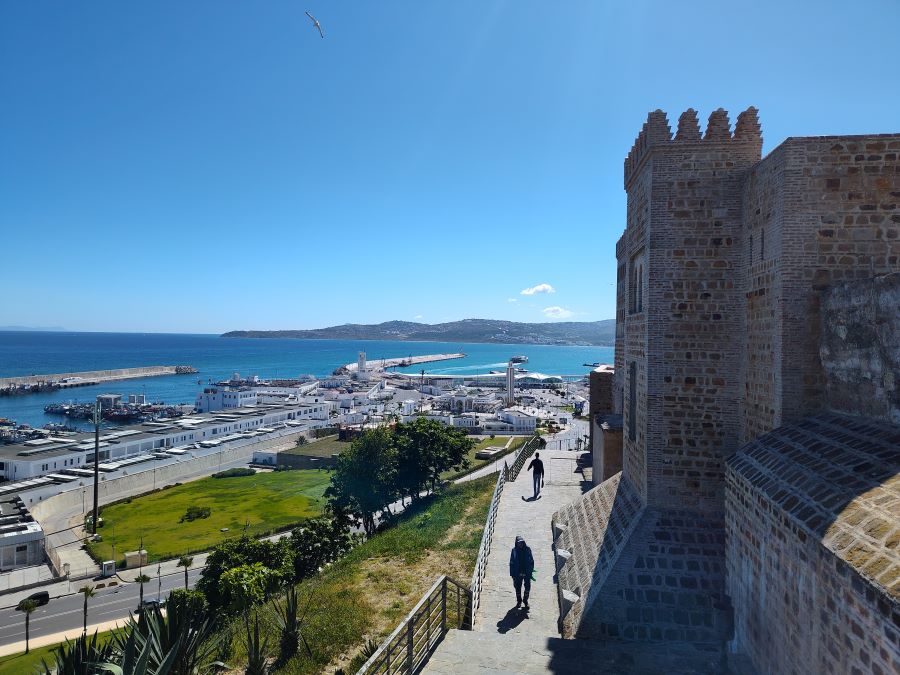
Further reading to exploring Morocco
A visit to Tangier Kasbah Museum
A visit to Rabat, things to do
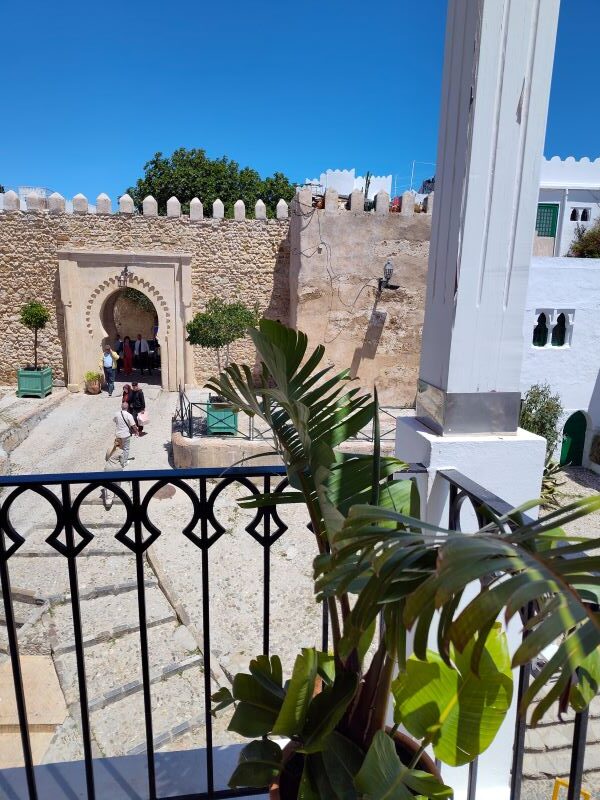
Conclusion to visiting the Medinas of Morocco
Exploring the medinas of Morocco is like stepping into a living museum where history, culture, and daily life unfold in every corner. Each city—Fez, Marrakesh, Essaouira, Rabat, and Tangier—offers its own rhythm and personality, from the maze-like alleys of Fez to the ocean breezes of Essaouira. Wandering through these old quarters reveals centuries of craftsmanship, trade, and tradition still thriving today. Whether you’re sipping mint tea in a quiet riad courtyard or bargaining for spices in a bustling souk, the medinas invite you to slow down and experience Morocco through all your senses. Make time to explore these timeless centers firsthand—you’ll leave with more than souvenirs, but a deeper connection to the country’s enduring spirit.

About author – Noel Morata
After relocating from the United States to Andalusia in 2024, I’ve made it my mission to discover every corner of Spain along with many Mediterranean locations, cities and attractions. Based just east of Granada, I’ve spent a lot of time visiting Morocco including multiple extended visits to Marrakesh, Tangier, Chefchaoen and different parts of the country throughout different seasons. My background in history cultural studies and years of residence and exploring all of the Mediterranean countries have given me unique insight into the region’s historical significance, local customs, and culinary traditions.
I regularly update my guides with the latest information gathered through personal visits and relationships with local tourism officials, always seeking what’s new and exciting in each destination. As a self-proclaimed foodie, I’m passionate about discovering authentic local markets and regional specialties.
If you love antiquities and Unesco World Heritage sites, you must visit all the medinas around Morocco – it is historic, filled with culture and surprises around every corner.
Disclosure – some of the links above to various tours, transportation and hotels are affiliate links that benefits our site if you book here and we appreciate your support. The links are competitive, and you are not paying above what other affiliates provide.
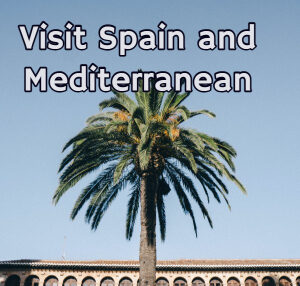
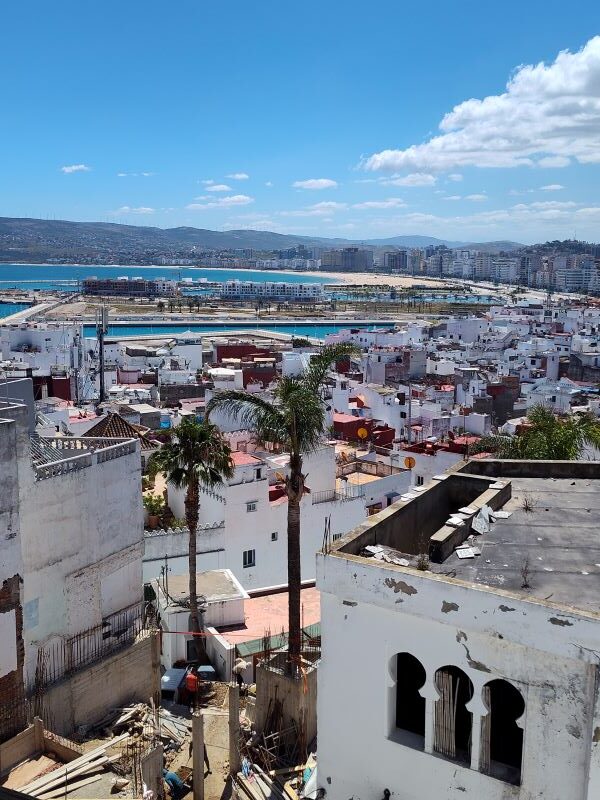
2 thoughts on “Explore the Medinas of Morocco”